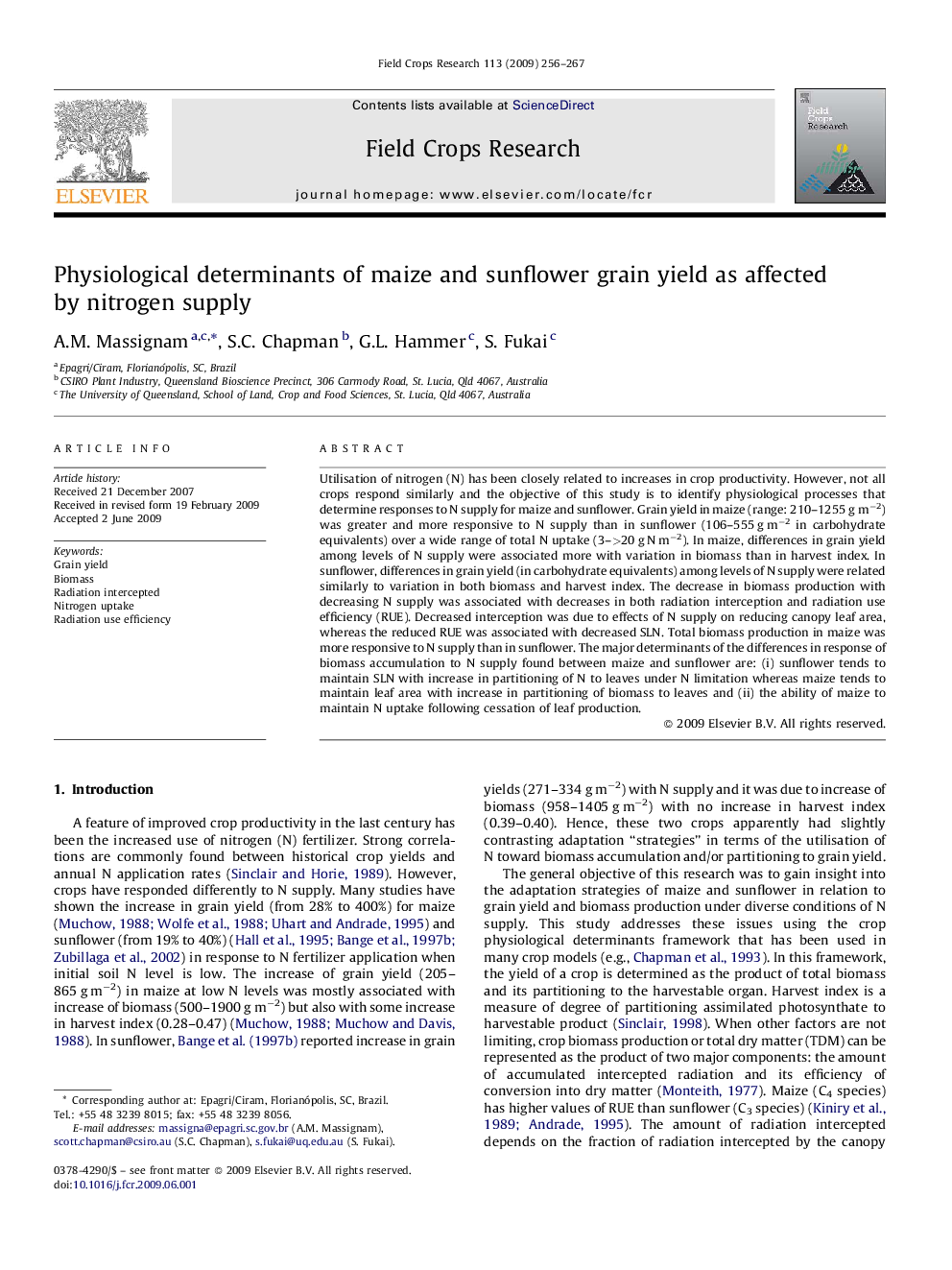| کد مقاله | کد نشریه | سال انتشار | مقاله انگلیسی | نسخه تمام متن |
|---|---|---|---|---|
| 4511075 | 1321890 | 2009 | 12 صفحه PDF | دانلود رایگان |

Utilisation of nitrogen (N) has been closely related to increases in crop productivity. However, not all crops respond similarly and the objective of this study is to identify physiological processes that determine responses to N supply for maize and sunflower. Grain yield in maize (range: 210–1255 g m−2) was greater and more responsive to N supply than in sunflower (106–555 g m−2 in carbohydrate equivalents) over a wide range of total N uptake (3–>20 g N m−2). In maize, differences in grain yield among levels of N supply were associated more with variation in biomass than in harvest index. In sunflower, differences in grain yield (in carbohydrate equivalents) among levels of N supply were related similarly to variation in both biomass and harvest index. The decrease in biomass production with decreasing N supply was associated with decreases in both radiation interception and radiation use efficiency (RUE). Decreased interception was due to effects of N supply on reducing canopy leaf area, whereas the reduced RUE was associated with decreased SLN. Total biomass production in maize was more responsive to N supply than in sunflower. The major determinants of the differences in response of biomass accumulation to N supply found between maize and sunflower are: (i) sunflower tends to maintain SLN with increase in partitioning of N to leaves under N limitation whereas maize tends to maintain leaf area with increase in partitioning of biomass to leaves and (ii) the ability of maize to maintain N uptake following cessation of leaf production.
Journal: Field Crops Research - Volume 113, Issue 3, 4 September 2009, Pages 256–267